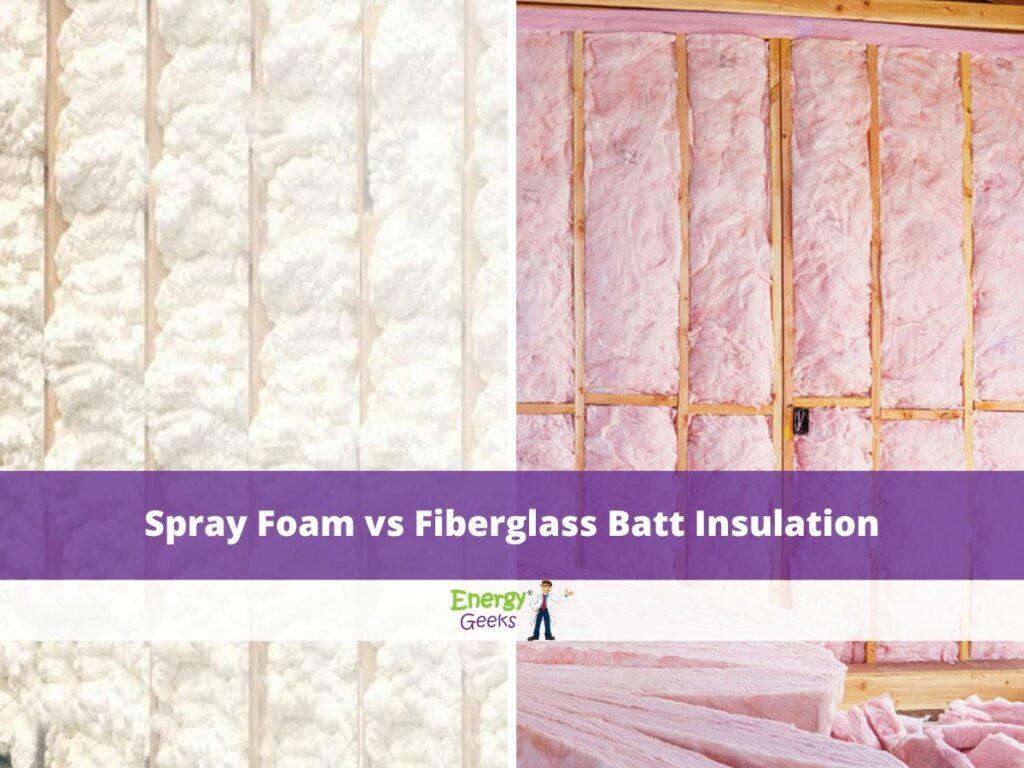ODDS & ENDS Our News Letter

What is Better, Spray Foam or Fiberglass Batt Insulation?
In most cases, spray foam. Here’s why:
- Spray foam does an excellent job of air sealing as it fills building cavities. This generally leads to great Blower Door results. Fiberglass does not have this quality.
- Spray foam easily conforms to different contours within a structure. Fiberglass insulation does not.
- Spray foam (especially closed cell) has a higher R-value per inch than fiberglass insulation. This is particularly useful when remodeling an existing home with 2×4 instead of 2×6 walls.
- Spray foam stays put once installed because it sticks to what it comes in contact with. Fiberglass insulation is notorious for falling away from the surface it’s meant to insulate. An example of this is cold floors above garages and crawlspaces.
Do You Need Attic Ventilation with Spray Foam Insulation?
Answer: It depends on where the spray foam insulation is applied. Consider the following:
Sealed Attic: – Using Spray Foam
It is common practice for heating and cooling equipment and related ductwork to be located within the attic space. Traditionally these attics are outside the conditioned space and get cold in the winter and hot in the summer. This means heating and cooling equipment needs to work harder to maintain temperatures. It also leads to wasted energy through the ductwork which can leak as well as radiate.
A “sealed attic” is when all the exterior surfaces within the space are sealed with a thick layer of spray foam. This includes the underside of roof sheathing as well as any vertical walls such as gable ends and exterior knee-walls. In this case, there is literally no room for ventilation. The attic becomes like the inside of a Styrofoam cooler. There are no openings or penetrations to the outside. This process brings the entire attic area within the conditioned space. Therefore, condensation, which ventilation is meant to prevent, can’t occur. It’s important to note that spray foam is the only insulation type that can effectively and completely seal an attic.
Remember, not only is a sealed attic warm in the winter but it stays cool in the summer, adding value to what is otherwise valueless space.
Ventilated Attic: – Using Spray Foam
When spray foam insulation is applied to the attic floor instead of all the exterior surfaces as described above, the attic would not be considered sealed and ventilation would be required. Proper ventilation helps to keep the inside temperature in an uninsulated attic even with the outside temperature. This way hot or cold spots that could otherwise cause mold or ice damming can’t occur. Insulating the attic floor has been the go-to for builders for decades but this is beginning to change.
Bottom Line: We expect to see more homes constructed with sealed attics in the future. Especially when HVAC equipment and ductwork are located within the space. Doing this keeps the inevitable heating and cooling loss from the equipment and ductwork within the conditioned space.
Want to Learn More About Spray Foam Insulation?
If you’d like more information on how you can minimize energy consumption and maximize savings while making your home more comfortable all year round, then contact Energy Geeks. Our mission is to provide the most comprehensive and efficient solutions to reduce energy use in your home.
Call: 401-766-1540 | 508-444-9800 | Get No Cost Estimate


